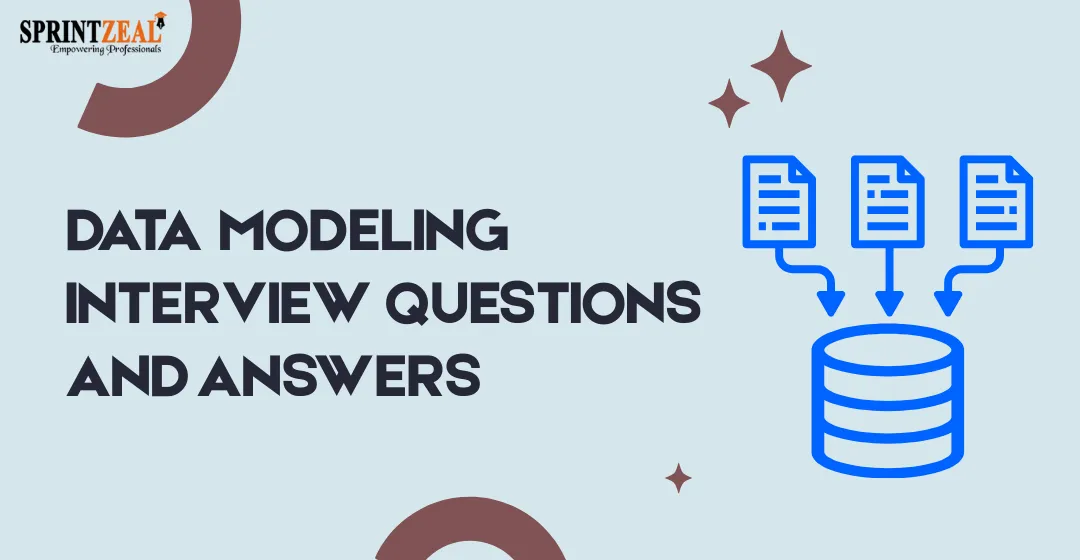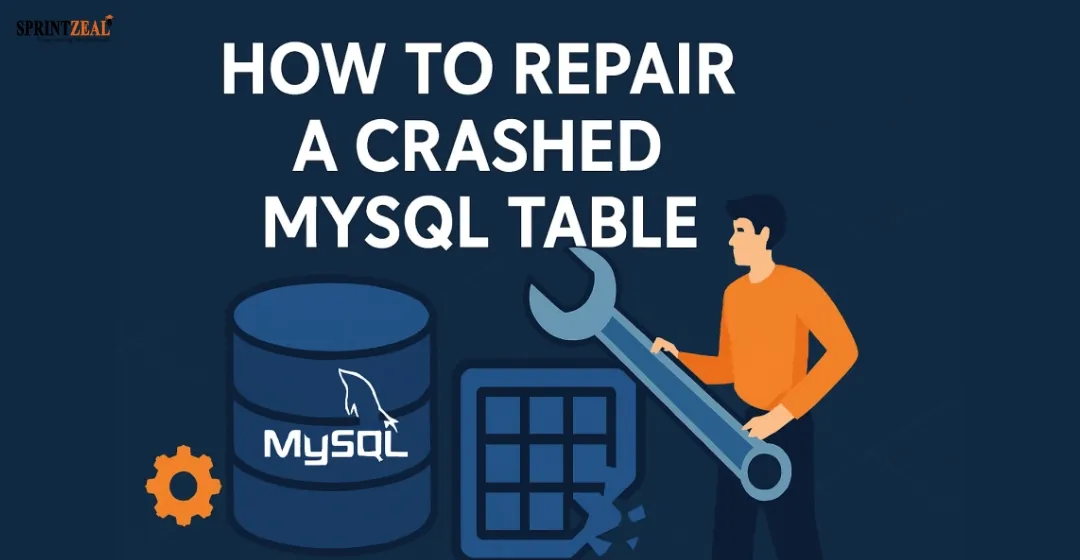SAS Interview Questions and Answers in 2024
-
 By Afra Noorain
By Afra Noorain - Published on Aug 23 2024

Table of Contents
Latest SAS Interview Questions and Answers 2024
SAS is a well-known data analytics tool in the market. SAS is comparable to other leading tools like R and Python when it comes to processing large amounts of data and supporting parallel calculations.
Globally, SAS is a market leader in corporate data analytics jobs. In India, SAS controls about 70% of the data analytics market share compared to 15% for R. If you want to step into Data Analytics, now is an opportune time to start with SAS Certification Training. It covers basic, intermediate, and advanced concepts of SAS, including topics such as data input, data manipulation, reporting, SQL queries, and SAS Macros.
This guide includes questions ranging from simple theoretical concepts to tricky interview questions generally asked in interviews for fresher and experienced SAS programmers. Let's proceed to some of the most important SAS Interview Questions and Answers that can be asked in your SAS interview.
Top 60 SAS Interview Questions and Answers in 2024
1) What is the fundamental construction of the SAS base program?
The fundamental design of SAS comprises:
- DATA step: Recovers and manipulates data.
- PROC step: Interprets and analyzes the data.
2) What is the essential syntax style in SAS?
To run the program effectively, you must follow these essential elements:
- A semicolon (;) at the end of each line.
- A DATA statement that defines your dataset.
- An INPUT statement for reading data.
- At least one space between each word or statement.
- A RUN statement to execute the code.
Example:
sas
Copy code
DATA mydata;
INFILE 'H:\StatHW\yourfilename.dat';
INPUT var1 var2 var3;
RUN;
3) Explain the DATA step in SAS?
The DATA step creates a SAS dataset, which includes the data along with a "data dictionary." The data dictionary holds information about the variables and their attributes.
4) What is PDV (Program Data Vector)?
The Program Data Vector (PDV) is a logical area in memory where SAS builds a dataset one observation at a time. During compilation, SAS creates a data buffer, which holds a record from an external file, and then creates the PDV.
5) What are the data types in a SAS dataset?
SAS datasets contain two data types:
- Numeric
- Character
6) Which statement does not perform automatic conversions in comparisons?
In a SAS dataset, the WHERE statement doesn’t perform automatic conversions in comparisons.
7) What is the use of the PROC SUMMARY function?
The PROC SUMMARY procedure calculates descriptive statistics on numeric variables in a SAS dataset. The syntax is similar to PROC MEANS.
8) What does PROC GLM do?
PROC GLM (General Linear Model) performs simple and multiple regression, analysis of variance (ANOVA), analysis of covariance, multivariate analysis of variance, and repeated measures analysis of variance.
9) Name types of classes in which SAS Informats are set.
SAS informats are set in three classes:
- Character Informats: $INFORMATw.
- Numeric Informats: INFORMATw.d
- Date/Time Informats: INFORMATw.
10) What does the CATX function do?
The CATX function concatenates character strings, removes leading and trailing spaces, and inserts separators.
11) What is the use of PROC GPLOT?
PROC GPLOT creates more detailed and colorful graphical outputs compared to other plotting procedures like PROC PLOT.
12) What is PROC in SAS?
In SAS, PROC steps (Procedures) analyze and process data in a SAS dataset. They control routines that perform tasks like sorting, summarizing, and listing.
13) What is a SAS dataset?
A SAS dataset consists of two parts:
- Descriptor portion: Contains metadata about the dataset.
- Data portion: Contains the actual data values.
14) List out some key concepts of SAS.
Some key concepts in SAS include:
- SORT procedure
- Missing values
- KEEP=, DROP= dataset options
- DATA step logic
- RETAIN statement
- Log
- Format procedure for creating value formats
- Data types
- IN= dataset option
15) What is factor analysis?
Factor analysis is a statistical technique used to reduce a large number of observed variables into fewer latent variables, which can explain the patterns of correlations within the observed data.
16) How does SAS treat the DSD delimiters?
When you define DSD (Delimited Data), SAS treats two consecutive delimiters as a missing value and removes quotes from character values.
17) What are good SAS programming practices for processing large datasets?
Good SAS programming practices for processing large datasets include:
- Sorting the data once, using FIRSTOBS= and OBS= options to process only a portion of the dataset.
18) How to include or exclude specific variables in a SAS dataset?
To include or exclude specific variables in a dataset, use the DROP and KEEP statements or dataset options.
19) How does the SUBSTR function work in SAS?
The SUBSTR function extracts a substring from a character variable.
20) What SAS features do you use to check errors and data validation?
To check errors, use the Log. For data validation, use procedures like PROC FREQ, PROC MEANS, or PROC PRINT to inspect the data.
21) What are the ways to do a "table lookup" in SAS?
There are several ways to do a "table lookup" in SAS, including:
- PROC SQL
- Match Merging
- Direct Access
- Format Tables
- Arrays
22) How will you generate test data with no input data?
You can generate test data with no input data using the PUT statement and DATA NULL.
23) What are the differences between CEIL and FLOOR functions in SAS?
- CEIL: Returns the smallest integer greater than or equal to the argument.
- FLOOR: Returns the largest integer less than or equal to the argument.
24) What are the differences between SAS functions and procedures?
- Functions: Operate on values within a single observation.
- Procedures (PROCs): Operate across observations and perform tasks on entire datasets.
25) How to remove duplicates using PROC SQL?
To remove duplicates using PROC SQL, use the following code:
sas
Copy code
proc sql noprint;
create table unique_data as
select distinct *
from original_data;
quit;
26) What are common programming errors in a SAS dataset?
Common programming errors in SAS include:
- Missing semicolons
- Not checking the log after submitting a program
- Not using debugging techniques
- Not using FSVIEW option actively
27) How to limit decimal places for a variable using PROC MEANS?
To limit decimal places for a variable, use the MAXDEC= option in PROC MEANS.
28) What are the differences between the SAS DATA STEP and SAS PROCs?
- DATA STEP: Used to read in and manipulate data.
- SAS PROCs: Subroutines that perform tasks on SAS datasets.
29) What is the use of the STOP statement?
A STOP statement is used to prevent infinite looping in a SET statement.
30) What is RUN-Group processing?
RUN-Group processing allows submitting a PROC step using a RUN statement without ending the procedure.
31) How to test debugging in SAS?
To debug in SAS, use the DEBUG option in the DATA statement.
32) How to create a permanent SAS dataset?
To create a permanent SAS dataset, you need to:
- Assign a library.
- Create the dataset.
33) What is SLIBREF?
SLIBREF is a server libref used by the server to identify the SAS data library when no physical name is determined, and the server libref is different from the client libref.
34) What are the default statistics that PROC MEANS produce?
The default statistics that PROC MEANS produce are:
- N (Number of non-missing observations)
- MIN (Minimum value)
- MAX (Maximum value)
- MEAN (Average)
- STDDEV (Standard deviation)
35) What is the difference between Match Merge and One-to-One Merge?
- Match Merge: Suitable when both datasets are sorted by ID, and each observation in one dataset has a corresponding observation in the other.
- One-to-One Merge: Suitable when you have exactly one observation in one dataset for each observation in another dataset.
36) What are the features of SAS?
Key features of SAS include:
- Business Solutions: Analytical tools and products for businesses.
- Analytics: Market leader in business analytics.
- Data Access and Management: Can be used as DBMS software.
- Reporting and Graphics: Visualization of analysis as summary, reports, and graphics.
- Visualization: Reports as graphs, ranging from simple scatter plots to complex multi-page panel charts.
37) What is the function of the STOP statement in a SAS Program?
The STOP statement tells SAS to stop processing the current DATA step immediately and move to the next step.
38) What is the difference between using DROP= dataset option in DATA statement and SET statement?
- DROP= in the DATA statement: Specifies variables to exclude from the output dataset.
- DROP= in the SET statement: Specifies variables not to be read from the input dataset.
39) How to read the last observation to a new dataset from an unsorted SAS dataset?
To read the last observation to a new dataset, use the END= dataset option.
Example:
sas
Copy code
data last_obs;
set original_data end=last;
if last;
run;
40) What is the difference between reading data from an external file and reading data from an existing SAS dataset?
- Reading from an external file: SAS reads one observation at a time, and the PDV (Program Data Vector) does not retain values across iterations.
- Reading from an existing SAS dataset: SAS reads all observations at once, and the PDV retains values across iterations unless explicitly modified.
41) How does the RETAIN statement work in SAS?
The RETAIN statement in SAS allows you to keep the value of a variable from one iteration of the DATA step to the next without resetting it to a missing value.
42) What is the difference between a BY statement and a CLASS statement in PROC MEANS?
- BY statement: The BY statement requires that the data be sorted beforehand and provides separate analyses for each BY-group.
- CLASS statement: The CLASS statement does not require sorted data and performs a single analysis, producing summary statistics for each level of the CLASS variable.
43) What is the difference between a FORMAT statement and an INFORMAT statement in SAS?
- FORMAT statement: Specifies how data values should be displayed.
- INFORMAT statement: Specifies how data values should be read into a dataset.
44) What is the significance of the LENGTH statement in SAS?
The LENGTH statement in SAS is used to define the number of bytes allocated for storing character or numeric variables. It must be placed before any variable assignment or INPUT statement to be effective.
45) How to use the RENAME= dataset option in SAS?
The RENAME= dataset option allows you to rename variables while reading a dataset or before writing to a new dataset.
Example:
sas
Copy code
data new_data;
set old_data(rename=(old_var=new_var));
run;
46) What are the different types of MERGE in SAS?
The different types of MERGE in SAS include:
- One-to-one merge: Combines datasets by aligning observations in the same position.
- Match merge: Combines datasets by matching on one or more key variables.
- Concatenation: Appends datasets end-to-end.
47) What is the difference between INFILE and INPUT statements in SAS?
- INFILE statement: Specifies the location of the external file to read data from.
- INPUT statement: Defines the structure of the data, including variable names, data types, and column positions.
48) What is a PUT statement in SAS?
The PUT statement writes data to an external file or the SAS log. It is often used for debugging and custom reporting.
49) What is a DATA NULL step, and when is it used?
A DATA NULL step is used when you want to execute DATA step processing without creating a dataset. It is often used for writing custom reports, debugging, or creating macro variables.
50) How do you calculate the mean of a variable in SAS?
You can calculate the mean of a variable using PROC MEANS or PROC SUMMARY. For example:
sas
Copy code
proc means data=dataset;
var variable_name;
run;
51) What is the difference between KEEP and DROP statements in SAS?
- KEEP statement: Specifies the variables to include in the output dataset.
- DROP statement: Specifies the variables to exclude from the output dataset.
52) What are the differences between DO WHILE and DO UNTIL statements in SAS?
- DO WHILE: The loop continues to execute as long as the condition is true at the beginning of each iteration.
- DO UNTIL: The loop continues to execute until the condition becomes true, meaning it checks the condition at the end of each iteration.
53) How to read specific columns from a dataset in SAS?
To read specific columns, use the KEEP= or DROP= options in the SET statement.
Example:
sas
Copy code
data new_data;
set old_data(keep=column1 column2);
run;
54) What is the purpose of the OUTPUT statement in SAS?
The OUTPUT statement in SAS writes the current observation to one or more datasets. It can be used to create multiple datasets within a single DATA step.
55) How do you assign a library in SAS?
You can assign a library in SAS using the LIBNAME statement.
Example:
sas
Copy code
libname mylib 'C:\SAS\Datasets';
56) What is the difference between PROC SORT and SORT PROCEDURE in SAS?
PROC SORT is the actual procedure used to sort data in a SAS dataset. There is no separate SORT PROCEDURE in SAS.
57) How to remove trailing spaces from a string in SAS?
Use the STRIP or TRIM functions to remove trailing spaces from a string in SAS.
Example:
sas
Copy code
new_string = strip(old_string);
58) How do you transpose data in SAS?
Use PROC TRANSPOSE to transpose data from rows to columns or vice versa.
Example:
sas
Copy code
proc transpose data=dataset out=new_dataset;
by id;
var varname;
run;
59) What is the difference between a temporary and a permanent SAS dataset?
- Temporary dataset: Stored in the WORK library and is deleted when the SAS session ends.
- Permanent dataset: Stored in a user-defined library and remains available after the SAS session ends.
60) How do you create a macro variable in SAS?
You can create a macro variable using the %LET statement.
Example:
sas
Copy code
%let myvar = 100;
61) What are the advantages of using the SAS system?
Advantages of using the SAS system include:
- Data Handling: Handles large datasets efficiently.
- Flexibility: Versatile for different types of analysis.
- Extensive Support: Strong technical support and community.
- Advanced Analytics: Supports advanced statistical analysis.
- Integration: Easy integration with other software and databases.
62) What is the difference between the RETAIN and SUM statements in SAS?
- RETAIN statement: Prevents variables from being reset to missing at the beginning of each iteration of the DATA step.
- SUM statement: Automatically retains the variable and adds the current value to the retained value.
These updates ensure that the information provided is accurate and up-to-date.
63) Distinction between PROC MEANS and PROC SUMMARY?
Proc MEANS as a matter of course delivers printed yield in the OUTPUT window while Proc SUMMARY doesn't. Incorporation of the PRINT choice on the Proc SUMMARY proclamation will yield results to the yield window.
Excluding the var proclamation in PROC MEANS examinations all the numeric variable while precluding the variable assertion in PROC SUMMARY creates a basic tally of perception.
Explore our course page to find the suitable course and visit our official website. Call or mail for more information and clarity on enrollment, and find the certification that fits your career requirements.
Get certified with Data Science Master Program Certification
Suggested Big Data Courses:
Subscribe to our Newsletters
Popular Programs
Trending Posts
Data Modeling Interview Questions and Answers 2025
Last updated on Sep 22 2025
Why Choose Data Science for Career
Last updated on Feb 28 2023
Data Analysis guide
Last updated on Aug 23 2022
Data Collection Tools - Top List of Cutting-Edge Tools for Data Excellence
Last updated on Oct 23 2025
How to repair a crashed MySQL table?
Last updated on Aug 13 2025
Big Data Project Ideas Guide 2024
Last updated on Aug 13 2024
Categories
- Other 66
- Agile Management 56
- Cloud Computing 51
- Project Management 170
- Big Data 58
- Business Management 82
- Digital Marketing 73
- IT Service Management 29
- Programming Language 50
- AI and Machine Learning 68
- IT Security 109
- Quality Management 77
- IT Hardware and Networking 25
- Microsoft Program 4
- Workplace Skill Building 12
- Risk Management 9
- Information Security 8
- Leadership and Management 7
- Corporate Training and Development 1
Trending Now
Big Data Uses Explained with Examples
ArticleData Visualization - Top Benefits and Tools
ArticleWhat is Big Data – Types, Trends and Future Explained
ArticleData Science vs Data Analytics vs Big Data
ArticleBig Data Guide – Explaining all Aspects 2024 (Update)
ArticleData Science Guide 2026
ArticleData Science Interview Questions and Answers 2024 (UPDATED)
ArticlePower BI Interview Questions and Answers (UPDATED)
ArticleData Analyst Interview Questions and Answers 2024
ArticleApache Spark Interview Questions and Answers 2024
ArticleTop Hadoop Interview Questions and Answers 2024 (UPDATED)
ArticleTop DevOps Interview Questions and Answers 2025
ArticleTop Selenium Interview Questions and Answers 2024
ArticleWhy Choose Data Science for Career
ArticleHow to Become a Data Scientist - 2024 Guide
ArticleHow to Become a Data Analyst
ArticleBig Data Project Ideas Guide 2024
ArticleWhat Is Data Encryption - Types, Algorithms, Techniques & Methods
ArticleHow to Find the Length of List in Python?
ArticleHadoop Framework Guide
ArticleWhat is Hadoop – Understanding the Framework, Modules, Ecosystem, and Uses
ArticleBig Data Certifications in 2024
ArticleHadoop Architecture Guide 101
ArticleData Collection Methods Explained
ArticleData Collection Tools - Top List of Cutting-Edge Tools for Data Excellence
ArticleTop 10 Big Data Analytics Tools 2024
ArticleKafka vs Spark - Comparison Guide
ArticleData Structures Interview Questions
ArticleData Analysis guide
ArticleData Integration Tools and their Types in 2024
ArticleWhat is Data Integration? - A Beginner's Guide
ArticleData Analysis Tools and Trends for 2024
ebookA Brief Guide to Python data structures
ArticleWhat Is Splunk? A Brief Guide To Understanding Splunk For Beginners
ArticleBig Data Engineer Salary and Job Trends in 2024
ArticleWhat is Big Data Analytics? - A Beginner's Guide
ArticleData Analyst vs Data Scientist - Key Differences
ArticleTop DBMS Interview Questions and Answers
ArticleTop Database Interview Questions and Answers
ArticlePower BI Career Opportunities in 2025 - Explore Trending Career Options
ArticleCareer Opportunities in Data Science: Explore Top Career Options in 2024
ArticleCareer Path for Data Analyst Explained
ArticleCareer Paths in Data Analytics: Guide to Advance in Your Career
ArticleA Comprehensive Guide to Thriving Career Paths for Data Scientists
ArticleWhat is Data Visualization? A Comprehensive Guide
ArticleData Visualization Strategy and its Importance
ArticleTop 10 Best Data Science Frameworks: For Organizations
ArticleData Science Frameworks: A Complete Guide
ArticleFundamentals of Data Visualization Explained
Article15 Best Python Frameworks for Data Science in 2026
ArticleTop 10 Data Visualization Tips for Clear Communication
ArticleHow to Create Data Visualizations in Excel: A Brief Guide
ebookHow to repair a crashed MySQL table?
ArticleTop PySpark Interview Questions and Answers for 2025
Article5 Popular Data Science Careers That Are in Demand
ArticleTop Data Warehouse Interview Questions to Crack in 2025
ArticleData Modeling Interview Questions and Answers 2025
Article











